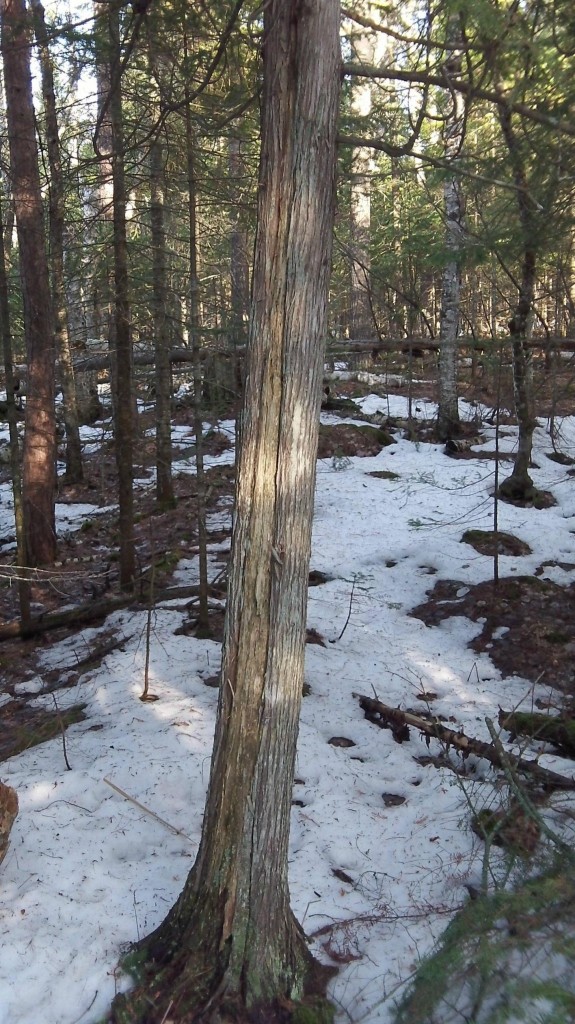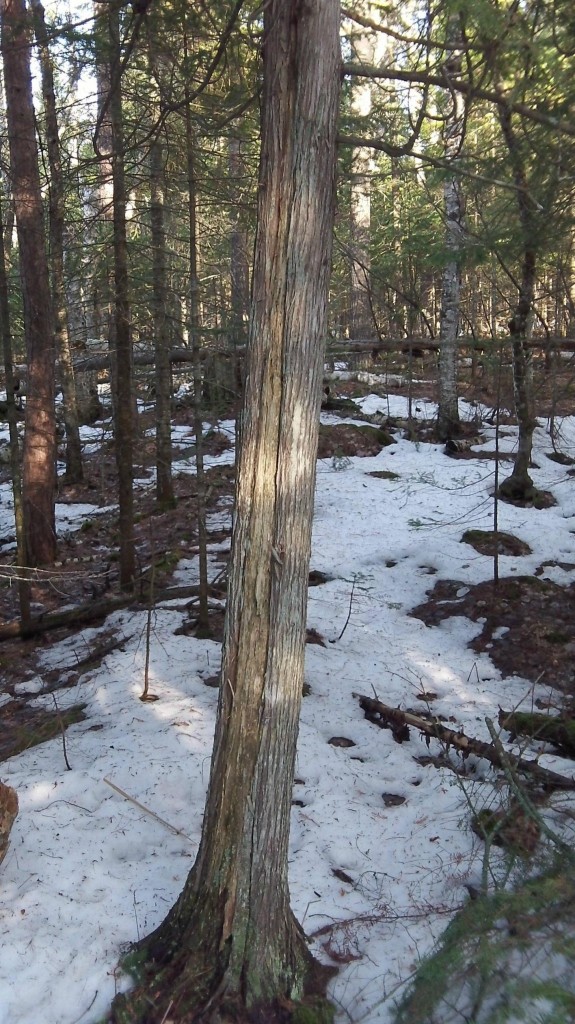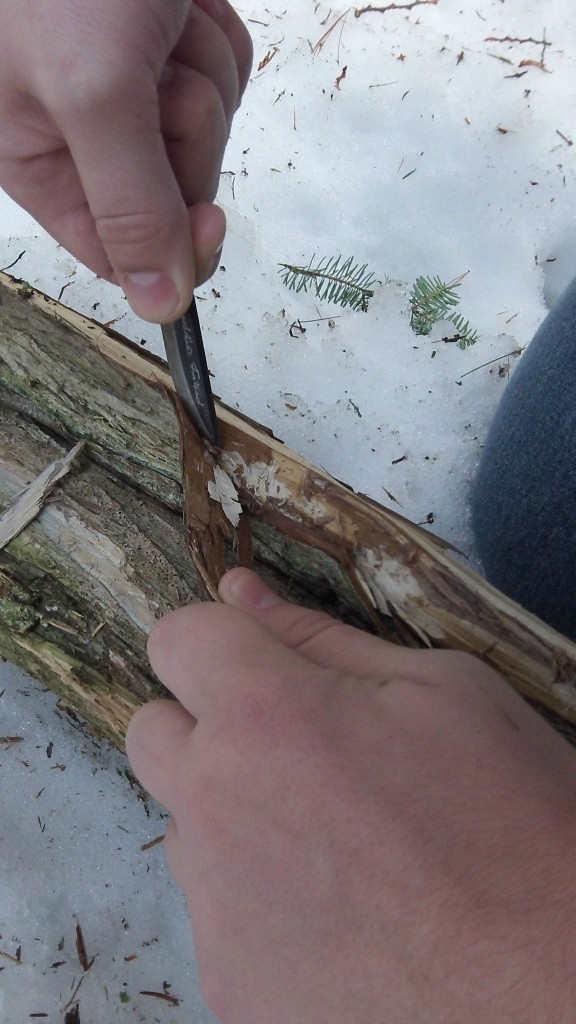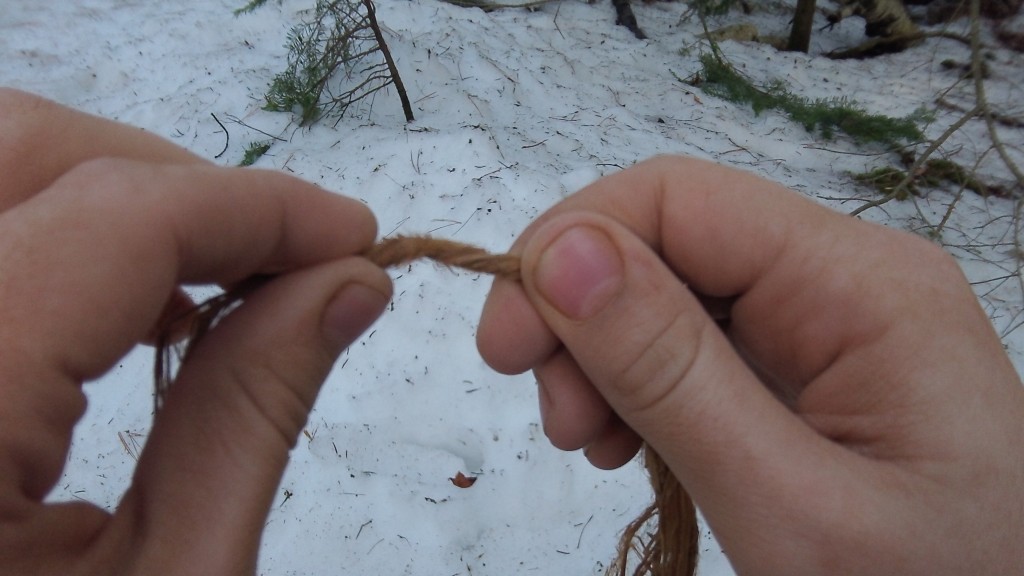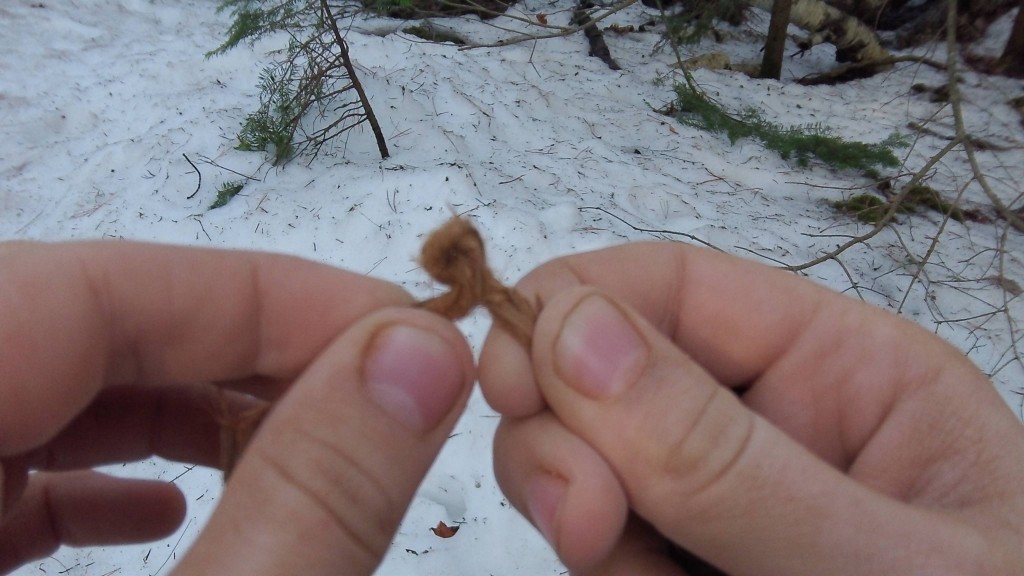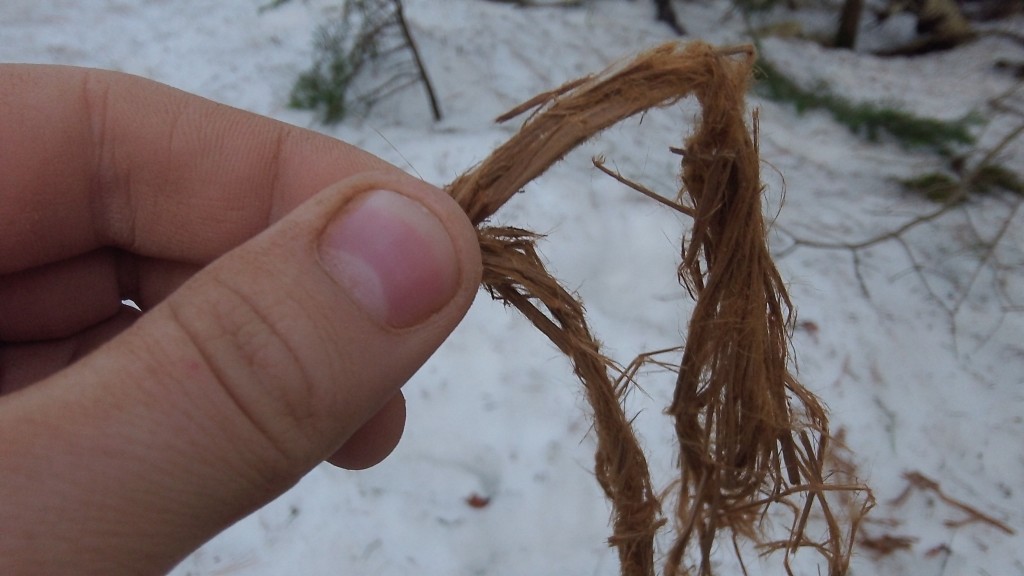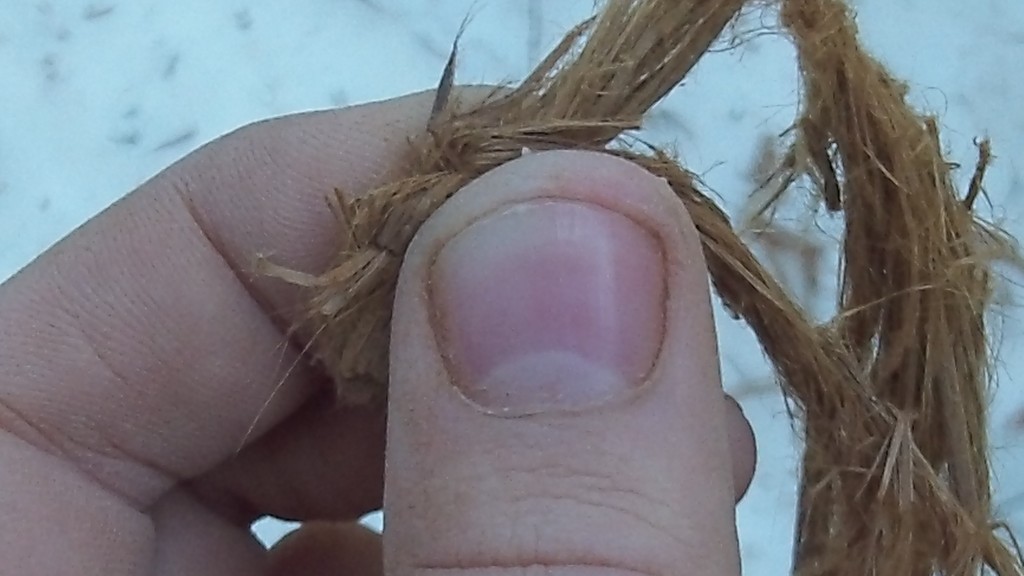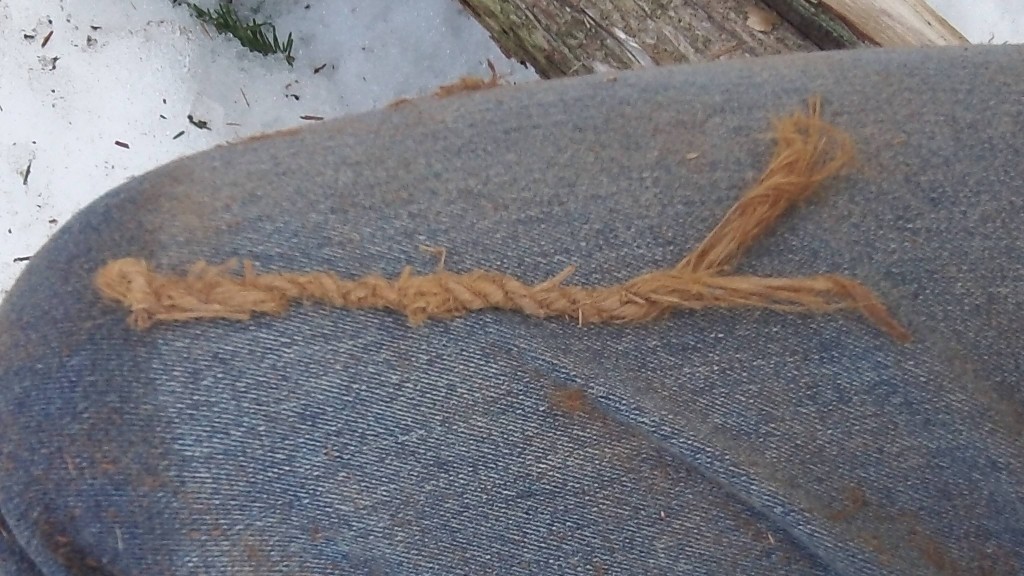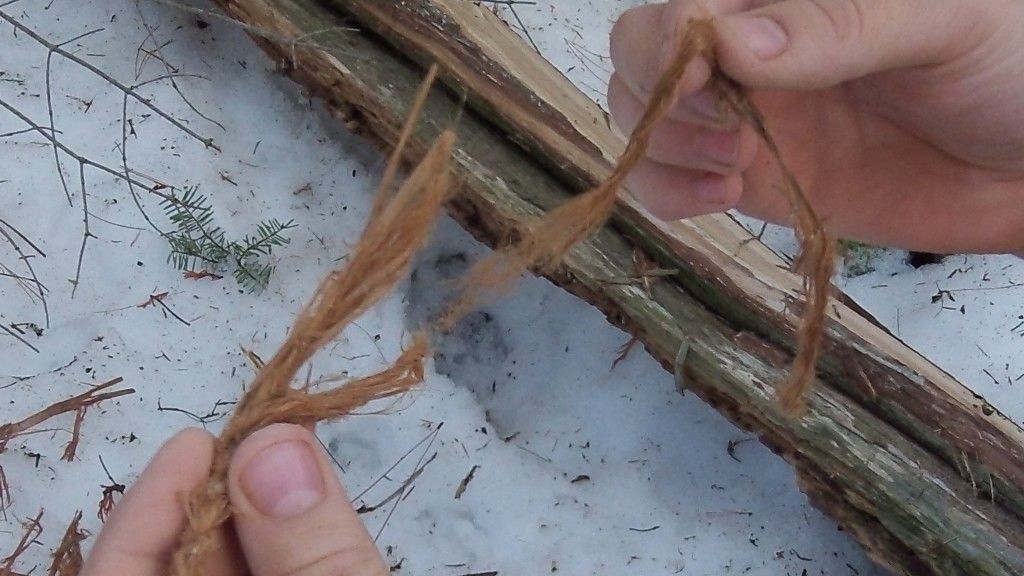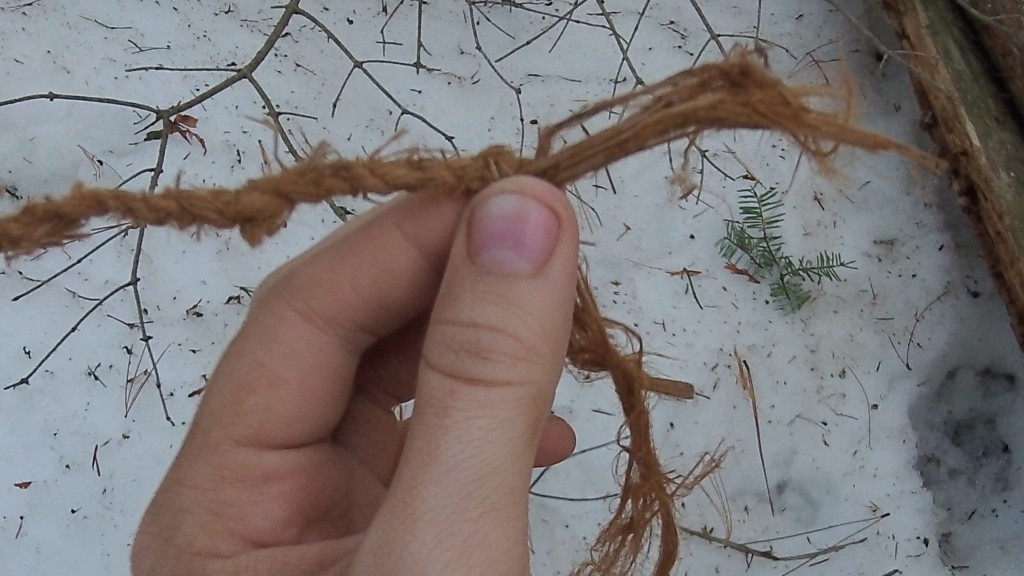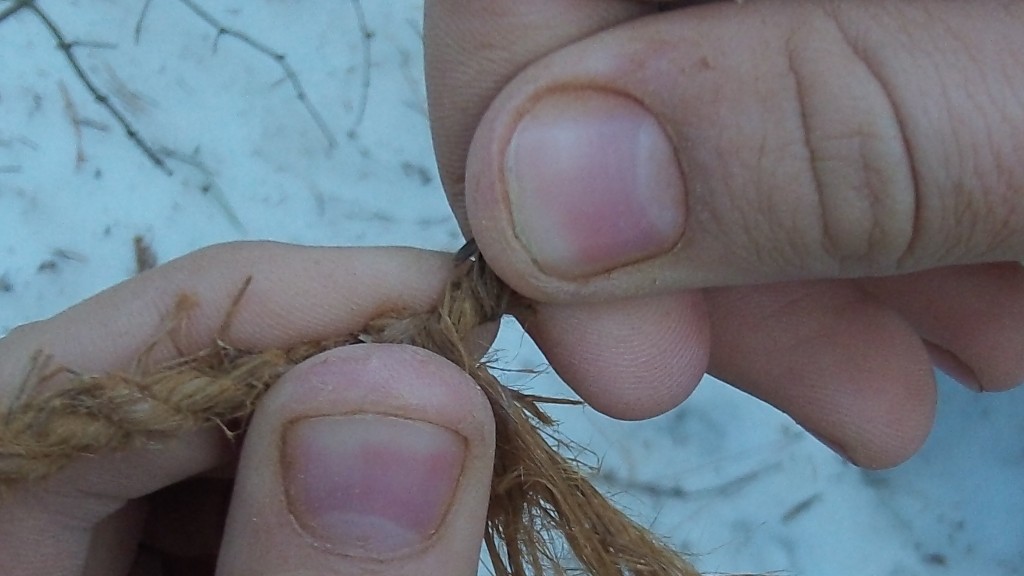If you have ever been out in the bush on an extended trip then you know how useful being able to tie things down or lash a piece of gear to your pack truly is. From shelter, to fishing line, snares, to tying one’s shoes, rope is a very important part of everyday wilderness living. Carrying cordage into the bush is one way to make sure you have it but that luxury may be exhausted, be lost, or degrade over time.
What I mean to do today is discuss and teach a method of making cordage from natural materials found all around us. Many materials will work for use in the reverse wrap method that I will be showing. Human hair, cattail, cedar, dogbane, and willow are some very common plants that have exceptional strength and easy use as cordage. The material I will be using for this tutorial is cedar from a fallen tree. While cedar is not the strongest material, it is readily available yearlong and may be doubled up to produce even stronger cord.
The first step is to find suitable material for producing cordage. Any fibrous material can be used. The First People would remove large sections of bark from a standing cedar tree to produce all sorts of materials from which cordage was only one tool of many.
This is a Northern White Cedar
When in dire need, a sheet of bark could be removed from this tree without killing it. For our purposes I located a down and dry cedar.
I begin to separate the bark from the hardwood by using my knife to pry it up and sliding the knife down the log
After enough cedar bark is collected, it must be processed. This is done simply by breaking it up in your hands and rubbing it back and forwards between your palms.
After thoroughly processing, your cedar should come out very fibrous and similar in texture to that of rough cotton.
Once the fibers are processed, and any hard bits of wood or outer bark are removed, it is time to begin making the cordage. Separate the amount of fiber desired with more fibers producing a thicker rope and less fiber producing a thinner rope.
Hold the fibers between your forefingers. Rotate the fibers away from you with your right hand and towards you with your left hand until the cord becomes taut and kinks over.
Hold the kinked portion between your left thumb and forefinger.
Now for the reverse wrap portion of this process. The top strand needs to be twisted away from your body with your right hand while your left hand stays stationary.
Pull the top strand towards you over the bottom strand.
After that step, pinch the formerly top strand with your left thumb to hold it in place.
The process continues with the twisting away of the new top strand, pulling it towards you and down, and then pinching it once again. This continues until the piece of material becomes a bit too short.
When the material becomes too short, it is time to splice in more material. It doesn’t have to be made of the same material that the cordage was started with but in this case it is. It may be beneficial, at times, to use the same material so that a consistent strength can be expected throughout the cord.
To splice more material into the cord, pick up the amount desired to be spliced. Keeping the cord even throughout is the tricky part. When splicing, it is advised to splice a piece with one end longer than the other. This will help build strength within the cord.
Place the new strand in the crook of the old piece of cordage, making sure one end is longer than the other.
From here begins the same old process. While holding the new strand to the crook of the cord, twist the top strand away from you.
Pull it down and over the bottom strand.
Then, pinch it off with your left thumb and forefinger.
Continue the original steps once the piece is spliced in until the cordage reaches the desired length.
Just about any fibrous material can be made into cordage with the proper technique and treatment. Here is a list of other tried and true plants for making decent cord:
Cedar (inner bark)
Juniper
Basswood
Tulip Poplar (inner bark)
Willow (inner bark)
Mulberry
Elm
Dogbane (Indian Hemp. STRONG rope)
Stinging Nettle
Velvet Leaf
Whole leaves with shoots and fronds:
cattail leaves (strip down so it is thinner)
Blue Flag Iris
Lily
Saw Palmetto
Yucca
Grape Vines
Virginia Creeper (is a weaker material)


